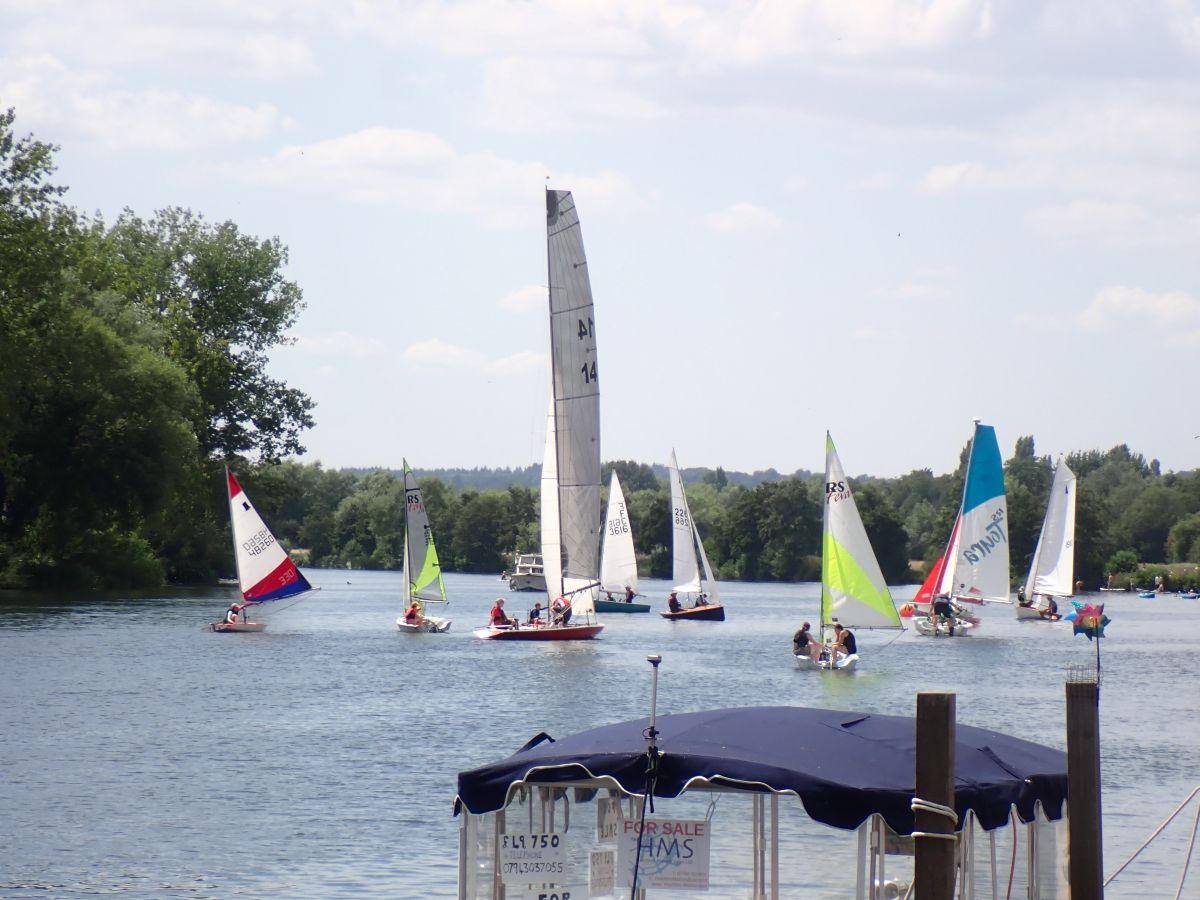admin Date , July 13, 2025 Sailing Previous Blog Rollering Comments (0)
At the end of Junior Bourne End Week, tradition dictates that the Cadets—those fearless young sailors with reflexes like cats and energy to burn—take on the seasoned Members in a final showdown: the All-Comers Race.
This year’s race had a twist. Among the fleet, a magnificent Thames A-Rater joined the fray, towering over us with its sky-scraping mast and colossal sail. In light winds, it glided across the river like a ghost ship on a mission—proof, if ever we needed it, that size can matter.
We launched early, sneaking in a bit of light-wind practice before the other boats were rigged and launched. Sailing across the river was manageable, but getting up and down it was more of a polite suggestion than a manoeuvre, thanks to the fluky wind direction.
Five minutes before the race, the klaxon sounded. We hovered behind the starting line like well-behaved ducklings, trying not to get in anyone's way. The fleet was varied: a pair of RS Fevas, two Merlins, a Firefly, a Mirror, three Toppers, and a joyful gang of Oppies who were far too sensible to race and instead spent their time ferrying each other across the river in relay races tied to a paddleboard. At the start, we were surprisingly well-positioned in the middle of the fleet. And then... the inevitable. The more experienced boats started slipping away, as if fitted with sneaky little outboard motors. The A-Rater flashed past us, elegant and smug. It would do so again. And again. We held the lead of the armada in pursuit—Toppers nipping at our transom, cadets calling "Room at the mark!" like traffic wardens at a regatta. In no time, we'd gone from the front of the group to watching three boats dance past us. These cadets knew what they were doing. They’d clearly been paying attention during the week’s coaching.
Mark, who’d been training the cadets, cruised up behind us on a paddleboard like a zen sailing guru. He called out helpful instructions:
Obediently we complied, and it worked! For a glorious moment, we kept pace with the Fevas.
The race was set at six laps. By lap two, we were already nearly last. But we were holding our own against the Toppers, which felt like a small win. As we followed a Merlin into a mark, they swooped in, turned on a sixpence, and zipped away like a startled trout. We followed close behind… and stalled. Paul wrestled with the sails and rudder, while I sat trying to stay calm, waiting for the jib to cross over. I’ve been told off before for being too impatient and backing the jib, so this time I waited like a saint. A very slow, slightly annoyed saint. Eventually, the boat turned, picked up speed… but the Merlin was already 50 metres ahead and probably laughing.
At the medium mark, we saw a couple of girls struggling to round it, which gave us hope. But by the time we got there, they were nearly at the finish line—and one was capsizing. I’d already done everything I could to boost our speed, including slightly raising the daggerboard (a move I call optimism with a handle). But then we found ourselves stuck in the dreaded dead zone near the bank. No wind. No momentum. Just us and a silent prayer.
Still, we did make it round the mark and even finished ahead of a Topper. Result!
We packed the boat away with smiles. It had been a good sail, with just enough chaos to be entertaining. We left the Cadets to their Opi-paddleboard relay race, wondering if they even knew how much energy they had left. Probably enough to do another six laps before tea.
